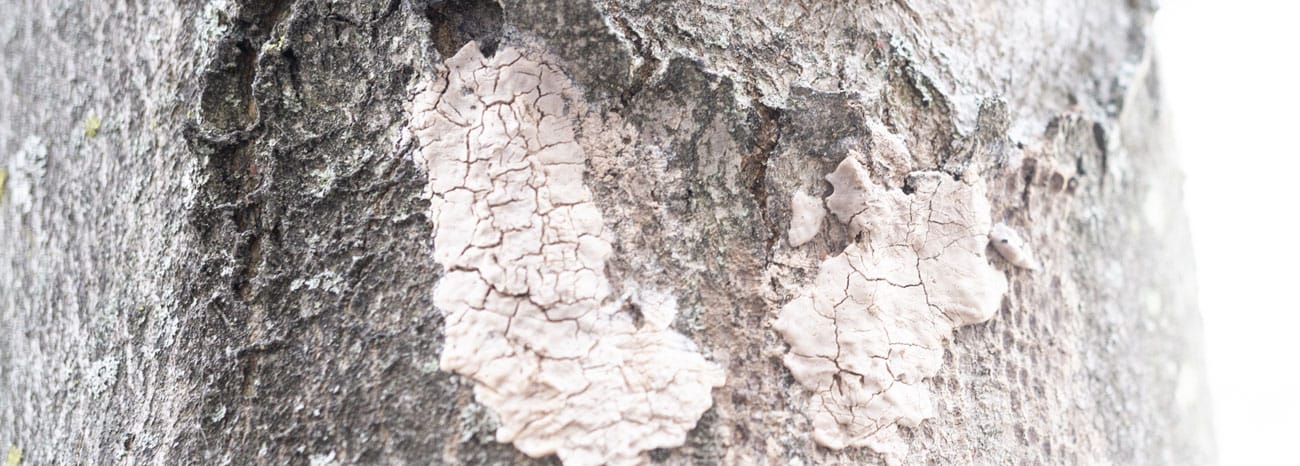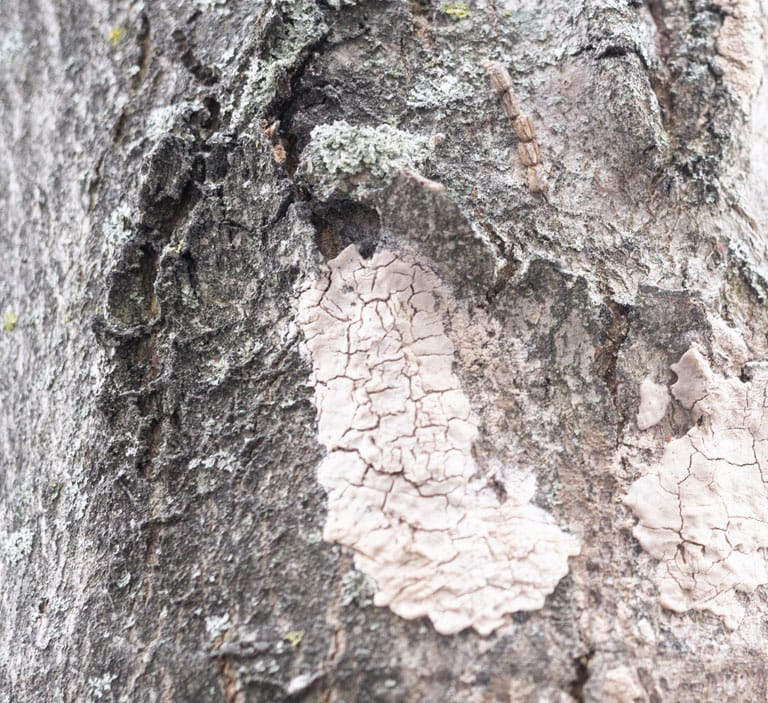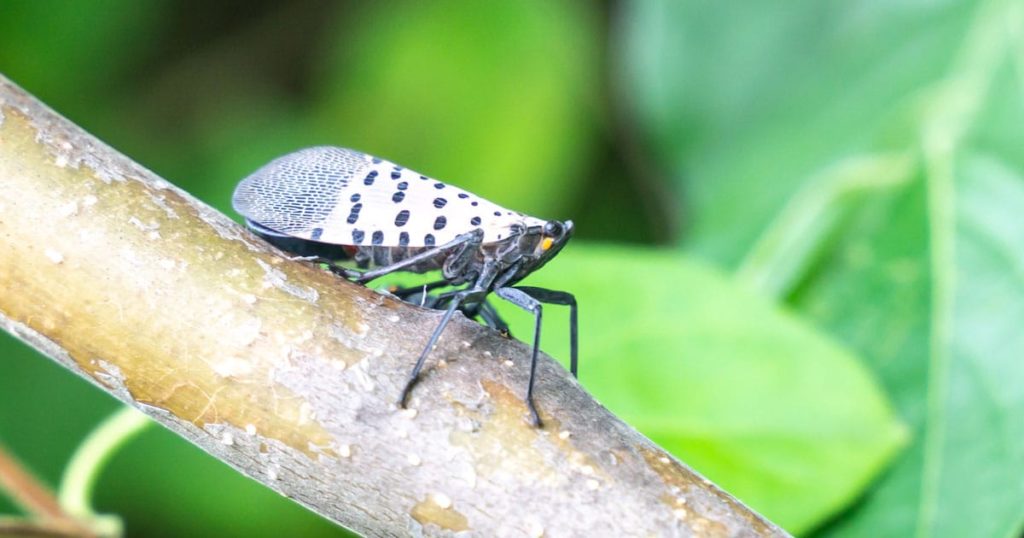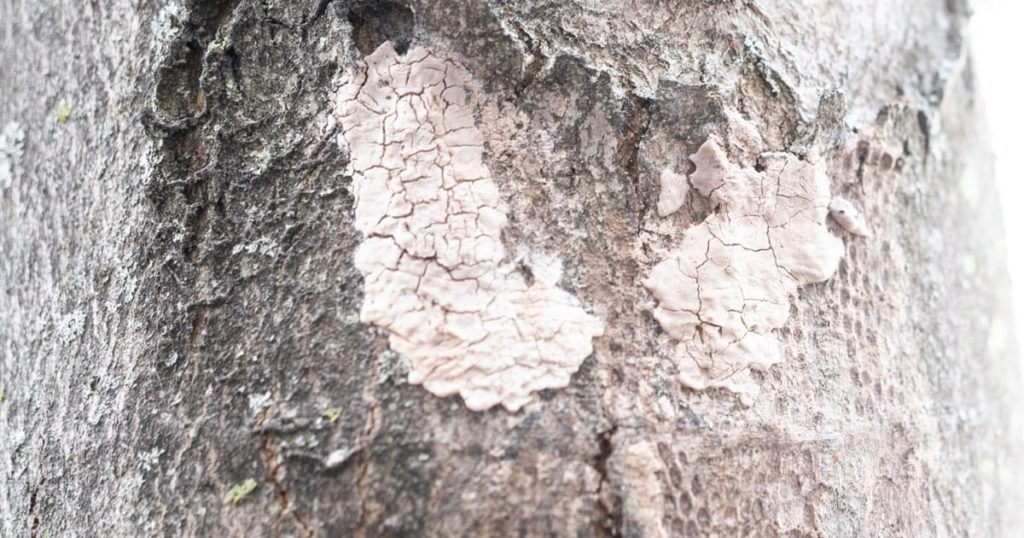The Spotted Lanternfly, Lycorma delicatula (White), an invasive species, a planthopper, that has been discovered in Berks County, Pennsylvania. It is native to China, India, Vietnam, and introduced to Korea where it has become a major pest. This insect has the potential to impact the grape, hops and logging industries greatly. Early detection is vital for the protection of Pennsylvania businesses and agriculture.
Spotted Lanternflies begin laying their eggs in September and can breed in very large numbers. Recognizing their egg masses and eradicating them will help greatly in controlling the spread of these invasive pests.
Identification
The Spotted Lanternfly adult is approximately 1” long and 1/2” wide at rest. The forewing is grey with black spots, and the wings tips are reticulated black blocks outlined in grey. The hind wings have contrasting patches of red and black with a white band. The legs and head are black; the abdomen is yellow with broad black bands. Immature stages are black with white spots and develop red patches as they grow.
Signs & Symptoms
Trees, such as the tree of heaven and willow, will develop weeping wounds. These wounds will leave a greyish or black trail along the trunk. This sap will attract other insects to feed, notably wasps and ants. In late fall, adults will lay egg masses on host trees and nearby smooth surfaces like stone, outdoor furniture, vehicles, and structures. Newly laid egg masses have a grey mud-like covering which can take on a dry, cracked appearance over time. Old egg masses appear as rows of 30-50 brownish seed-like deposits in 4-7 columns on the trunk, roughly an inch long.
How to Destroy Spotted Lanternfly eggs
If you see Lanternfly egg masses, scrape them off, double bag them and throw them away. You can also place the eggs into alcohol or hand sanitizer to kill them. Please report all destroyed egg masses on our website.
Collect a Specimen
Specimens of any life stage can be turned in to the Pennsylvania Department of Agriculture’s Entomology lab for verification. Submit samples with the Entomology Program Sample Submission Form.
Take a Picture
A photograph of any life stage (including lanternfly egg masses) can be submitted to Badbug@pa.gov.
If you can’t take a specimen or photograph, call the Spotted Lanternfly hotline at 1-888-4BAD-FLY (1-888-422-3359) with information regarding your sighting.
Spotted Lanternfly Eggs on Cars
One significant way to prevent the pest’s spread, besides identifying and squashing them, involves meticulous checks of vehicles parked near infested areas. This routine helps ensure that these pests are not inadvertently transported to new locations.
Vehicle inspection should be thorough, covering both the interior and exterior. For the interior, check the floor, seats, and areas near doors and windows. On the outside, walk around the vehicle, paying particular attention to hiding places, such as truck beds and caps where Spotted Lanternflies are prone to land. Using a flashlight, inspect the inside of the wheel wells—a common hiding spot—and, if possible, the vehicle’s roof.
Don’t overlook equipment used for moving items, such as dollies, and inspect all sides of these, as well as pallets, which are particularly susceptible to infestation.
Spotted Lanternfly Quarantine
The Spotted Lanternfly (SLF) Order of Quarantine and Treatment was created by the Pennsylvania Department of Agriculture to protect Pennsylvania’s economy and residential quality of life by stopping the spread of this invasive pest to new areas within or outside of the current quarantine zone.
Quarantine zones may be expanded to new areas if SLF detections are confirmed. The interactive SLF quarantine map provides information on whether your location is quarantined for SLF.




